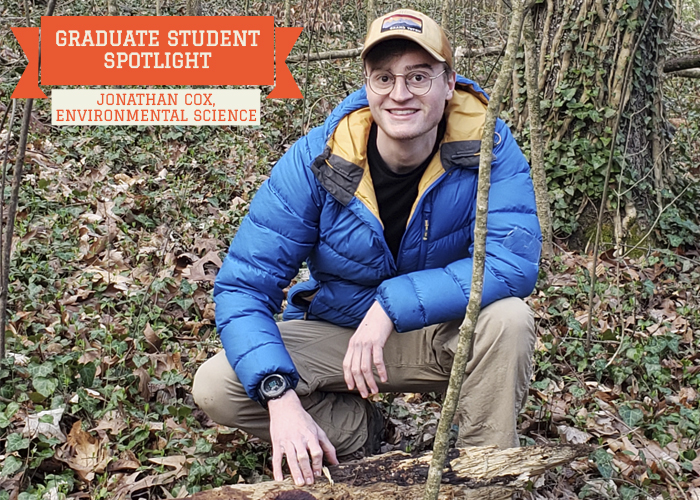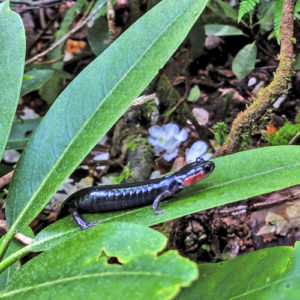
Growing up in East Tennessee, Jonathan Cox spent hours exploring the natural areas in and around Knoxville, flipping over rocks and looking for salamanders and insects. His early career aspirations, however, didn’t point towards a future in ecology. In fact, he wanted to be a chemist.
“My whole goal was to become a chemist,” Cox, a graduate student in the Department of Geology, said, “I thought that was exactly what I wanted to do.” But, after taking chemistry classes in high school, he realized it wasn’t a good fit. “I thought it was interesting but just I couldn’t picture myself doing it as a career.”
About the same time, Cox started taking environmental science courses, and the path for his future took a turn.
“That launched me into wanting to study the environment in general,” said Cox “I wanted to take different aspects of ecology, geology, and climatology and see how those interact with each other in various ecosystems.” Now, as a graduate student in the Department of Earth and Planetary Sciences, that’s just what he does.
Cox’s research focuses on the loss of the Eastern hemlock, and how that affects salamander populations. Eastern hemlock trees are rapidly declining as a result of the hemlock woolly adelgid. The hemlock woolly adelgid is an invasive beetle that feeds on hemlock sap, which results in the death of the tree. Like many invasive species, the hemlock woolly adelgid has no predators in North America, and 90 percent of the geographic range of eastern hemlock in North America has been affected by the insect.
Cox has always been interested in herpetology, the study of reptile and amphibian species, so focusing on how local salamanders are responding to the loss of the hemlock trees was an ideal project. When asked about his interest in salamanders, Cox replied, “salamanders are just awesome. They’re super cool.” He went on to explain that in addition to being able to breathe through their skin, they can hear through their feet and actually metamorphose into an adult while still in the egg.

Red-cheeked salamander. Jonathan Cox/University of Tennessee
Salamanders also play a pretty big role in the environment, “they can control nutrient cycling in our temperate forests,” Cox explained. They feed on small insects, which are typically decomposers, breaking down organic matter to release nutrients back into the soil, “so by preying on them, they’re controlling how that organic matter decays, essentially slowing down the cycling of nutrients from leaf litter to soil” said Cox.
Another role salamanders play in the environment is that of a bioindicator, which can help researchers understand overall ecosystem health. Bioindicators are species that are sensitive to changes in their environment, so when environmental conditions degrade, those organisms will leave in search of better surroundings. Cox explained, “an absence of certain species in aquatic systems, like specific aquatic insects, can indicate that the water quality must be impaired in some way.”
Cox’s salamander research is providing clues, not only to the biology and ecology of salamander species, but also about the overall health and condition of East Tennessee’s ecosystems. Knowledge gained from his project can help scientists as face increasingly complex environmental challenges such as invasive species. That’s a big job for a small organism, but the information gained from Cox’s salamander research could be critical in developing land management and conservation plans. And, in Cox’s own words, that’s super cool.
__
CONTACT:
Jen Roder (865-974-2152, jroder@utk.edu)